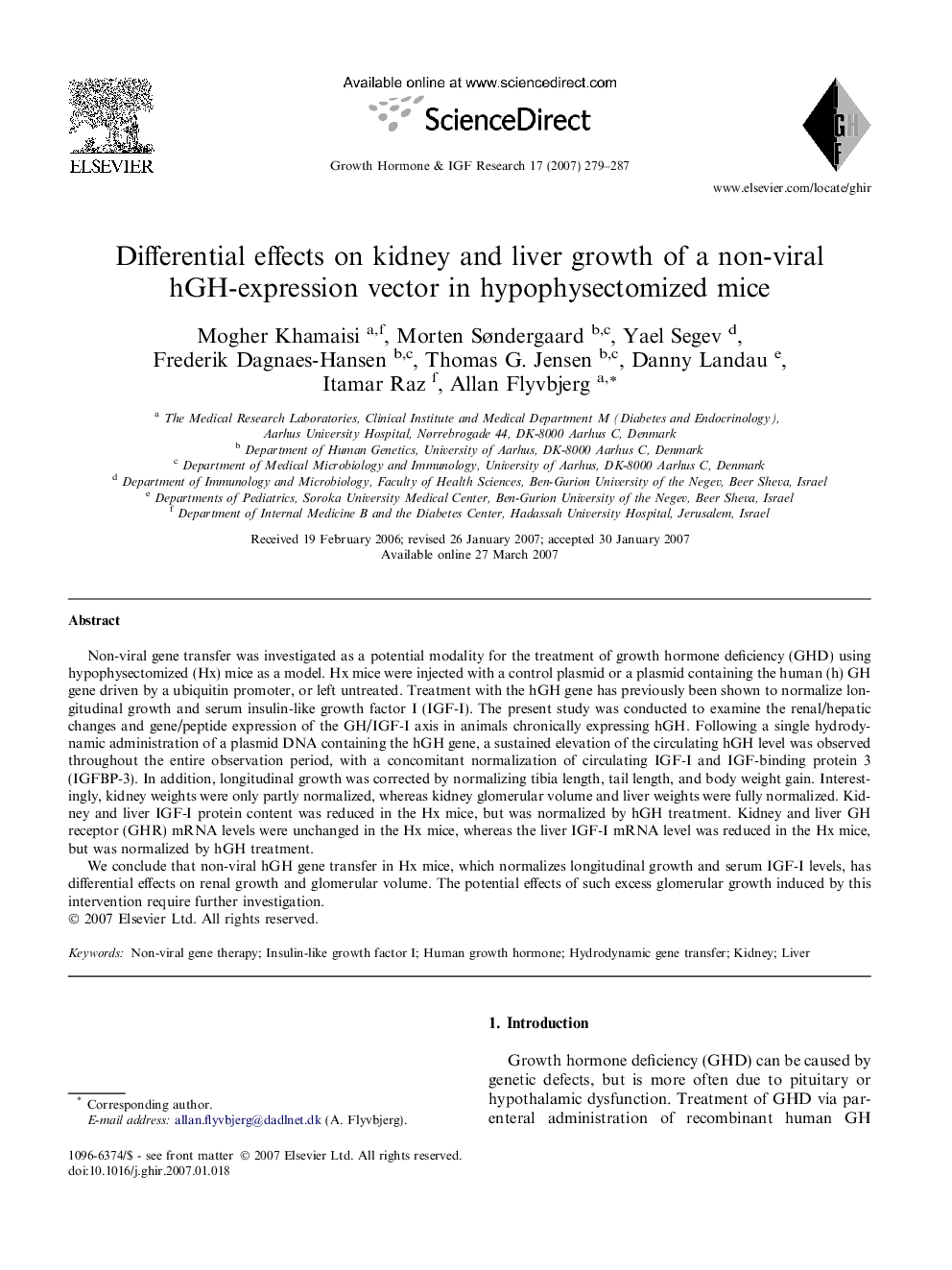| Article ID | Journal | Published Year | Pages | File Type |
|---|---|---|---|---|
| 2803309 | Growth Hormone & IGF Research | 2007 | 9 Pages |
Non-viral gene transfer was investigated as a potential modality for the treatment of growth hormone deficiency (GHD) using hypophysectomized (Hx) mice as a model. Hx mice were injected with a control plasmid or a plasmid containing the human (h) GH gene driven by a ubiquitin promoter, or left untreated. Treatment with the hGH gene has previously been shown to normalize longitudinal growth and serum insulin-like growth factor I (IGF-I). The present study was conducted to examine the renal/hepatic changes and gene/peptide expression of the GH/IGF-I axis in animals chronically expressing hGH. Following a single hydrodynamic administration of a plasmid DNA containing the hGH gene, a sustained elevation of the circulating hGH level was observed throughout the entire observation period, with a concomitant normalization of circulating IGF-I and IGF-binding protein 3 (IGFBP-3). In addition, longitudinal growth was corrected by normalizing tibia length, tail length, and body weight gain. Interestingly, kidney weights were only partly normalized, whereas kidney glomerular volume and liver weights were fully normalized. Kidney and liver IGF-I protein content was reduced in the Hx mice, but was normalized by hGH treatment. Kidney and liver GH receptor (GHR) mRNA levels were unchanged in the Hx mice, whereas the liver IGF-I mRNA level was reduced in the Hx mice, but was normalized by hGH treatment.We conclude that non-viral hGH gene transfer in Hx mice, which normalizes longitudinal growth and serum IGF-I levels, has differential effects on renal growth and glomerular volume. The potential effects of such excess glomerular growth induced by this intervention require further investigation.
